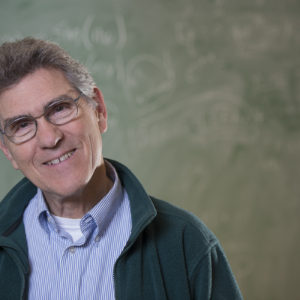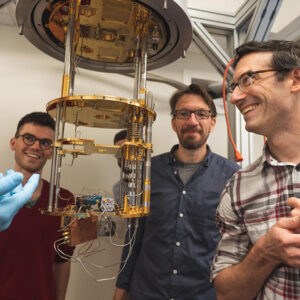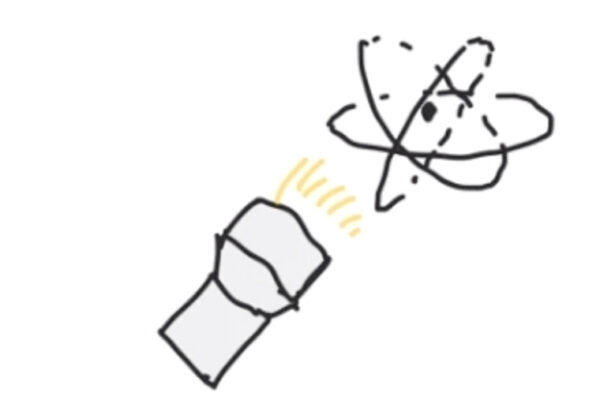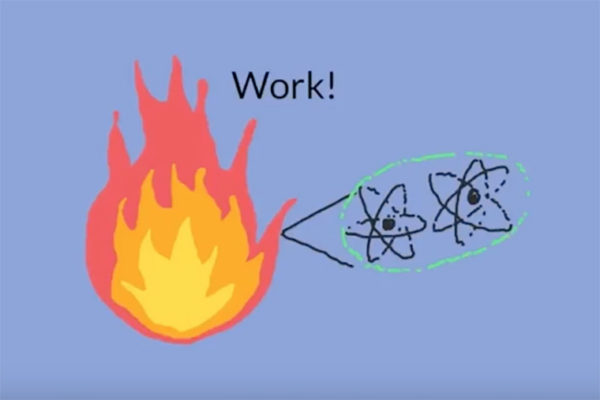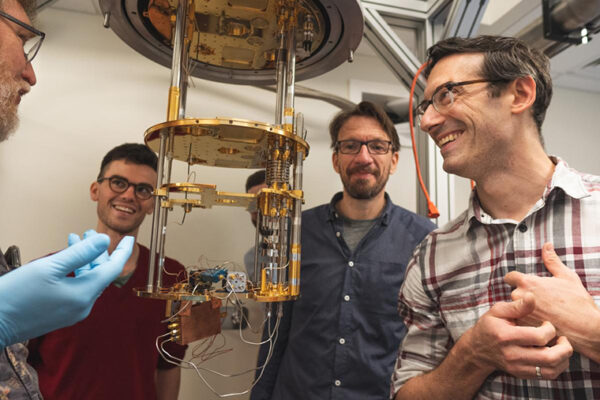In a certain sense, physics is the study of the universe’s symmetries. Physicists strive to understand how systems and symmetries change under various transformations.
New research from Washington University in St. Louis realizes one of the first parity-time (PT) symmetric quantum systems, allowing scientists to observe how that kind of symmetry — and the act of breaking of it — leads to previously unexplored phenomena. The work from the laboratory of Kater Murch, associate professor of physics in Arts & Sciences, is published Oct. 7 in the journal Nature Physics.
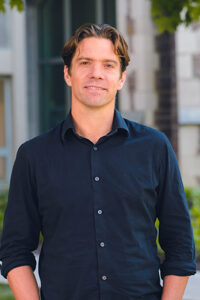
Other experiments have demonstrated PT symmetry in classical systems such as coupled pendulums or optical devices, but this new work in Murch’s lab, along with experiments in China by Yang Wu et al., reported in Science this May, provides the first experimental realization of a PT-symmetric quantum system.
“For us, certainly, the biggest motivation is to explore the unknown territories of quantum physics,” said Mahdi Naghiloo, lead author of the paper who recently earned his PhD at Washington University. “We were curious to experimentally explore quantum systems when they are pushed into the complex world and look for powerful tools they may offer.”
These and future PT symmetry experiments have potential applications to quantum computing.
The rest of the team included Murch; Maryam Abbasi, a Washington University graduate student; and Yogesh Joglekar, a theoretical physicist from Indiana University Purdue University Indianapolis (IUPUI).
A new symmetry in quantum systems
If you reflect a system in a mirror, that’s called a parity transformation. This transformation sends a right hand to a left hand, and vice-versa. If you record a video of the system’s evolution and play it backwards, that’s time reversal. If you perform both of these transformations simultaneously, and the system looks the same as it did before, then the system has PT symmetry.
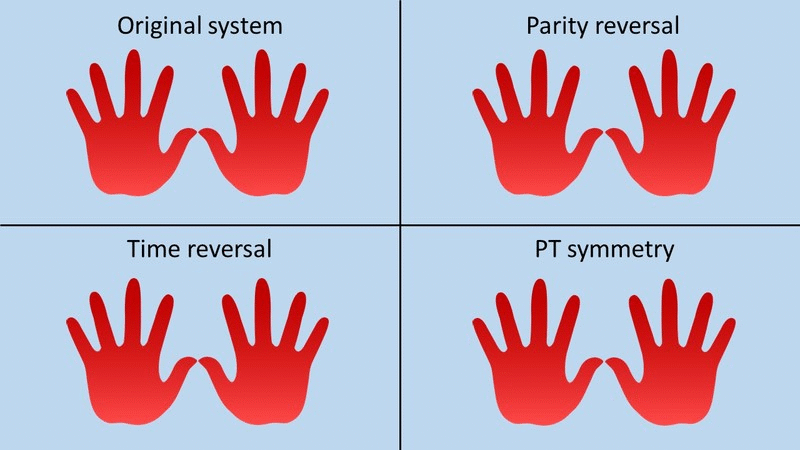
The study of PT symmetry has its roots at Washington University, where in 1998 Carl Bender, the Wilfred R. and Ann Lee Konneker Distinguished Professor of Physics, co-authored a seminal paper establishing the requirement that quantum systems be Hermitian is not necessary in order for them to have real energy values. Rather, the weaker requirement of PT symmetry are sufficient. This breakthrough initiated a field of mathematical physics dedicated to studying such systems.
Spurred on by Bender, Murch has been interested in the topic since arriving at Washington University in 2013, but until recently, no one understood how to make a quantum system PT-symmetric.
Joglekar, a theorist, was interested in realizing PT systems across different platforms. He had worked with experimentalists to do so with electrical circuits, fluids, single photons and ultra-cold atoms. A fortuitous discussion between Murch and Joglekar in late 2017 provided the necessary insight.
“Almost immediately, we sketched on the board exactly what the idea was. In 10 minutes, we had the whole idea for the experiment,” Murch recalled.
The team used a superconducting circuit, called a qubit, to generate a three-state quantum system. The first excited state tends to decay to the ground state, and the two excited states have an oscillatory coupling. Using a technique called post-selection, the team considered only those trials where the qubit did not decay to the ground state, a choice that gives rise to effective PT symmetry. Controlling two parameters related to the energy of the system, they studied how the time-evolution behavior depended on those parameters.
“The key to this experiment was being able to control the environment so that just the excited state decays and the other states don’t decay, and that was something that we could deliberately manufacture,” Murch said. “At the same time, we can initialize it into a particular state and then we can do this process of quantum state tomography, where we’re figuring out exactly what the quantum state is doing after some period of time.”
Complex energies
The weird phenomena that the team observed stem from the fact that the system has complex energies — that is, they involve the square root of -1.
Every complex number has two square roots (for example, 4 has 2 and -2 as square roots) except for 0, which only has one (itself). A point where two values coalesce into just one is known as a degeneracy, an important concept in many areas of physics. Here, the square root degeneracy appears in the parameter space, where it’s called the “exceptional point.” This point divides parameter space into a PT-symmetric region, where the system oscillates in time, and a PT-broken region, where the system experiences decay. Such behavior stands in stark contrast with typical quantum systems that always oscillate in time.
A second consequence of the complex energies is referred to as coalescence of eigenstates. The two eigenstates of the system — that is, the states with definite energies — are normally orthogonal to each other, a condition analogous to two lines being perpendicular. But as the system approaches the exceptional point, the angle between the eigenstates decreases until they become parallel at the exceptional point itself, just like the positive and negative square roots coalesce to the single value 0. Until now, this type of degeneracy had never been seen in a quantum system.
Potential applications to quantum computing
The team’s work is just the beginning of the experimental study of PT symmetry in quantum mechanics. Theory predicts strange geometric effects associated with encircling the exceptional point, which the lab is now trying to measure in experiments.
According to Murch, the “bane of a quantum engineer’s existence,” is decoherence, or the loss of quantum information. Early indications, based on quantum photonic simulations by Joglekar and Anthony Laing at the University of Bristol in England, suggest that in the Murch lab’s set-up, the decay from the first excited state to the ground state might slow the process of decoherence, providing the possibility for more robust quantum computing.
The PT symmetry collaboration between Murch and Joglekar continues through the fall while Joglekar spends a semester as a visiting professor at Washington University.
Joglekar emphasized the importance of collaboration between theorists like himself and experimentalists like Murch. “It’s a very dynamic back-and-forth enterprise,” he said. “And it should be like that, because you want to in the end understand nature. Nature doesn’t care whether you call yourself a theorist or experimentalist.”
